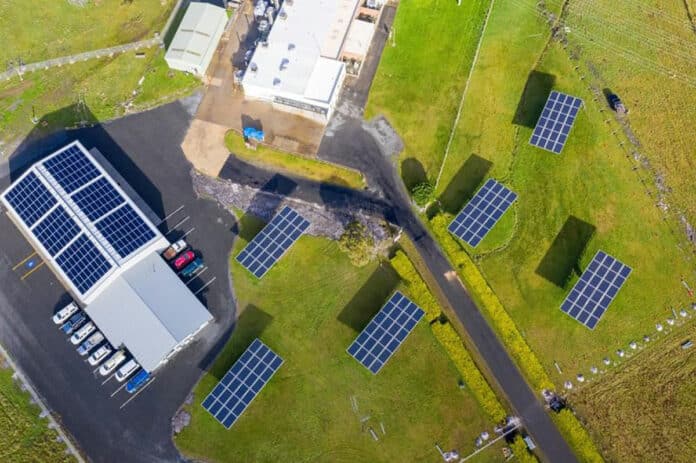Many small islands have no electricity, and some rely on diesel generators. To provide environment-friendly electricity to the island, it is necessary to develop a power supply system using natural resources.
King Island has a world-leading hybrid power system, which uses renewable energy and diesel to power the island. The power system on King Island is owned and operated by Hydro Tasmania, which has developed a hybrid system that combines wind and solar generation with innovative technologies. 2.45 MW of wind generation and 470kW of solar PV were installed at several earlier stages of development.
Now, King Island has built a 1.5MW solar farm to reduce diesel consumption and carbon emissions. GEM Energy, an Australian solar company, has completed the construction of this solar farm.
The new six-hectare- 1.5MW solar farm on King Island has 5000 solar panels, costing approximately $3.35 million. The solar farm will soon be connected to the local grid. It will save 300,000 liters of diesel and 800 tonnes of carbon emissions annually and provide reliable electricity for local homes and businesses.
Earlier, Hydro Tasmania, with the support of the Australian Renewable Energy Agency, launched The King Island Renewable Energy Integration Project (KIREIP) initiative, which resulted in the development of a world-leading hybrid off-grid power system.
The KIREIP system supplies 65% of the island’s electricity using renewable energy. If conditions are right, the system can provide 100% of the island’s energy needs. They are reducing more than 95% of carbon emissions generated by diesel generators.
Renewable energy technologies being used in the system are wind, solar (PV), and biodiesel. These are integrated with new and emerging enabling and storage technologies. The system includes battery energy storage, a diesel-based uninterruptible power supply (D-UPS), an intelligent grid, and advanced control systems.
Hydro Tasmania CEO Ian Brooksbank said, “Over the past 10 years, we’ve slashed diesel consumption on King Island by 50 percent. That saves 2.1 million liters of diesel and cuts carbon emissions by 5,700 tonnes a year”.
King Island has become a renewable energy blueprint for isolated off-grid communities in Australia and worldwide and is leading the way.
“This type of hybrid, renewable energy system is also a model for the national electricity market. How we integrate wind, solar, and storage while reducing fossil fuels and maintaining grid stability is an important lesson as the nation transitions to renewable energy”.
“Hydro Tasmania has a proud history of sustainability, and our renewable energy is helping the State achieve its own net zero targets,” Mr Brooksbank said.
The King Island Solar Farm development is also part of Hydro Tasmania’s plan to achieve net zero emissions by 2025.
